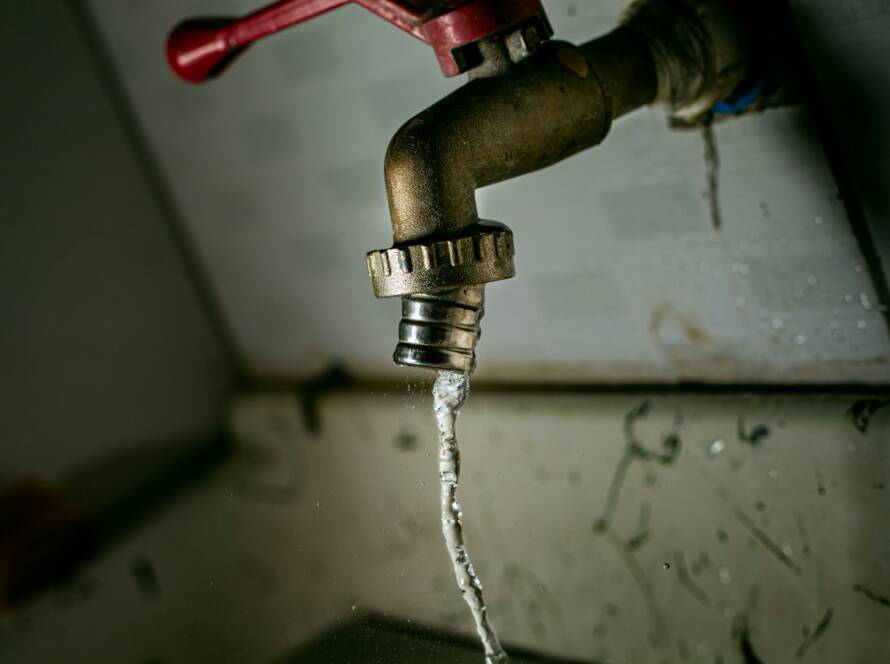Your employees arrive Monday morning to find the office freezing cold. The heating system died over the weekend. You need emergency repairs that cost three times the normal rate. Your staff can’t work properly in the cold. This disaster could have been prevented.
Most heating system failures don’t happen suddenly – they develop over weeks or months while giving warning signs that most people miss. By the time you notice problems, you’re facing expensive emergency repairs instead of simple preventive maintenance.
The Real Cost of Heating System Failures
When your heating system breaks down, the costs hit from multiple directions:
Emergency repair premiums. Emergency heating repairs cost 2-3 times more than scheduled maintenance. You pay overtime rates for technicians working nights, weekends, or holidays.
Business disruption. Offices become too hot or cold to work in. Employees are uncomfortable and less productive. Some businesses may need to close temporarily or send people home.
Equipment replacement costs. A complete heating system for a medium-sized building can cost £50,000-£200,000 or more. Even smaller component failures can cost thousands.
Wasted energy. Failing systems use 20-50% more energy before they break down completely. This means higher utility bills for months before you discover the problem.
Lost productivity. Uncomfortable employees work slower, make more mistakes, and take more sick days. The hidden cost of poor climate control can be substantial.
How Heating Systems Fail (And Why You Don’t Notice)
Most heating systems don’t suddenly stop working – they deteriorate gradually over months while giving warning signs:
Efficiency slowly decreases. The system uses more energy to produce the same heating or cooling. Your energy bills creep up, but the change seems gradual enough to ignore.
Components wear out gradually. Motors, fans, and compressors start working harder, making more noise, or running less smoothly. These changes happen slowly enough that people get used to them.
Filters get clogged. Air filters collect dust and dirt over time. As they get dirtier, the system works harder to push air through them. Eventually, it can’t move enough air to heat or cool properly.
Refrigerant levels drop. Air conditioning systems can develop small leaks that slowly reduce refrigerant levels. The system becomes less effective over time.
Electrical connections loosen. Vibration and temperature changes cause electrical connections to become loose. This creates resistance that makes components work harder and eventually fail.
Warning Signs Your Business is Missing
Your heating system gives plenty of warning before it fails completely, but most people don’t know what to look for:
Temperature inconsistencies. Some rooms get too hot while others stay too cold. This usually means the system is struggling to distribute air properly.
Unusual noises. Grinding, squealing, rattling, or banging sounds mean something is wearing out or loose. These noises often start quietly and get louder over time.
Higher energy bills. When heating systems start failing, they use more electricity to do the same job. Bills might increase by 20-50% before the system finally breaks down.
Poor air quality. If the air feels stuffy, dusty, or humid, your ventilation or filtration systems might not be working properly.
Longer heating or cooling times. If it takes much longer than usual to reach comfortable temperatures, the system is probably losing efficiency.
The Problem with Traditional Maintenance
Most businesses manage their heating systems using approaches that lead to expensive emergencies:
Reactive maintenance means you only call repair technicians after something breaks completely. This guarantees you’ll pay emergency rates and suffer through uncomfortable conditions while waiting for repairs.
Scheduled maintenance only might happen twice a year. Problems that develop between visits can go unnoticed until they cause major failures.
Basic thermostats can only tell if a room is too hot or cold, not whether the heating system is working efficiently or developing problems.
Manual inspections by maintenance staff can’t monitor equipment constantly and might miss early warning signs of developing problems.
Smart Monitoring: Prevention Instead of Emergency Response
Companies like SmartSenser have developed systems that monitor heating system performance continuously and predict problems before they cause failures. Think of it as having a heating expert watching every component 24/7.
Continuous performance monitoring tracks how hard your heating systems are working, how much energy they’re using, and whether they’re maintaining proper temperatures efficiently.
Early problem detection identifies developing issues like failing motors, clogged filters, or refrigerant leaks weeks or months before they cause system failures.
Predictive maintenance alerts tell you when components are likely to fail soon, allowing for scheduled repairs during convenient times instead of expensive emergencies.
Energy efficiency tracking monitors energy usage patterns and alerts you when systems start using more power than normal, indicating developing problems.
Remote diagnostics let heating technicians diagnose many problems remotely using data from smart sensors, making repairs faster and more efficient.
The Business Case for Smart Monitoring
Reduced repair costs. Catching problems early allows for less expensive repairs. Replacing a worn belt might cost £50, while replacing a motor that failed because of the broken belt might cost £2,000.
Improved energy efficiency. Smart monitoring helps maintain peak system efficiency, potentially reducing energy costs by 15-30% compared to systems that gradually decline in performance.
Prevented emergency breakdowns. Avoiding sudden heating system failures eliminates expensive emergency repairs and prevents business disruption.
Extended equipment life. Proper maintenance based on actual system condition helps heating equipment last longer, delaying expensive replacement costs.
Minimized downtime. Scheduled maintenance during convenient times prevents unexpected outages that disrupt business operations.
Real Business Success Stories
The office building save. A property management company installed smart monitoring after facing several expensive emergency repairs. The system detected a failing compressor motor three weeks before it would have broken down completely. Scheduled replacement during a weekend cost £1,200 instead of the £4,000 emergency repair they would have faced.
The retail chain success. A retail company used smart monitoring across 50 stores. Early detection of system problems allowed them to schedule repairs during off-hours, preventing customer discomfort and maintaining sales. They reduced heating repair costs by 40% in the first year.
The school district prevention. A school district installed monitoring after a heating system failure forced them to close a building for two days. The system has since prevented three potential failures by detecting problems early and scheduling maintenance during school holidays.
How Smart Monitoring Works in Practice
Comprehensive sensor networks install throughout your heating systems to monitor temperature, pressure, vibration, electrical current, and other key indicators of system health.
Intelligent analysis uses cloud-based systems to analyze all sensor data, identifying patterns that indicate developing problems by comparing current performance to historical baselines.
Predictive algorithms predict when specific components are likely to fail based on their current condition and usage patterns, allowing for proactive maintenance.
Mobile alerts and dashboards give you smartphone notifications when problems are detected and access to detailed system performance information from anywhere.
Integration capabilities connect with existing building management systems to provide comprehensive oversight of all heating equipment.
Implementation: Easier Than You Think
Assessment phase. SmartSenser evaluates your current heating systems and building layout to design an optimal monitoring solution.
Quick installation. Sensors install rapidly without disrupting operations. Most systems can be operational within days.
Staff training. Your team learns to use the monitoring dashboard and respond to alerts. The system is designed to be user-friendly for non-technical staff.
Integration with existing systems. Smart monitoring works with your current heating equipment – no need to replace functional systems.
Ongoing support. Professional monitoring services provide continuous oversight and technical support.
Immediate Steps You Can Take
While planning for smart monitoring, you can reduce breakdown risk immediately:
- Schedule regular maintenance at least twice yearly, ideally before heating and cooling seasons
- Monitor energy bills and investigate any significant increases that might indicate efficiency problems
- Listen for unusual sounds and train staff to report grinding, squealing, or rattling noises
- Check air filters regularly and replace them monthly or as recommended
- Monitor temperature consistency and investigate areas that become too hot or cold
- Keep maintenance records to identify patterns and predict future needs
Your Next Steps
Every day your heating system operates without proper monitoring puts your business at risk of expensive emergency repairs and operational disruption. The warning signs are there – the question is whether you’re equipped to see them.
Evaluate your current situation:
- How much do you spend on heating repairs annually?
- What would a heating system failure cost in lost productivity?
- How often do you face unexpected equipment problems?
Calculate the opportunity:
- What would preventing one major breakdown save you?
- How much could 15-30% energy savings reduce your bills?
- What’s the cost of business disruption from system failures?
Consider smart monitoring:
- Compare system costs to your current repair and energy expenses
- Look for solutions that work with existing equipment
- Choose providers with commercial building experience
Contact SmartSenser:
- Get a customized assessment of your heating systems
- Learn about installation options and costs
- Discuss how monitoring addresses your specific needs
The Bottom Line
Your heating system is critical infrastructure that keeps your business running. When it fails, the costs go far beyond repair bills – they include lost productivity, uncomfortable conditions, and potential business disruption.
Smart monitoring shifts you from expensive reactive maintenance to cost-effective preventive care. The investment typically pays for itself within 18-24 months through reduced repair costs and energy savings.
The technology exists today to prevent most heating system failures before they occur. The question is whether you’ll invest in prevention or continue gambling with emergency repairs.
Your employees deserve comfortable working conditions. Your business deserves protection from unexpected equipment failures. Your budget deserves relief from expensive emergency repairs.
Smart heating system monitoring delivers all three. The choice between prevention and emergency response has never been clearer.
Don’t wait for your next heating crisis to force this decision. The solutions are available, proven, and more affordable than the cost of your next emergency repair.


